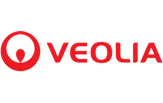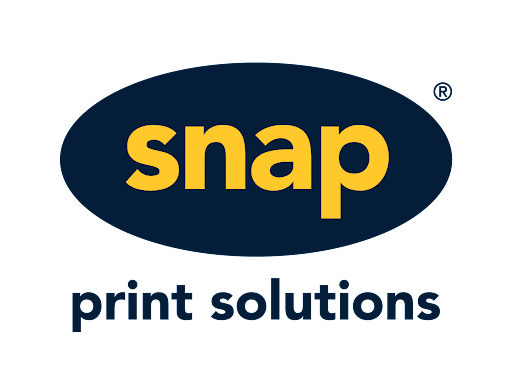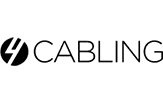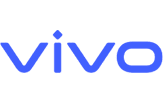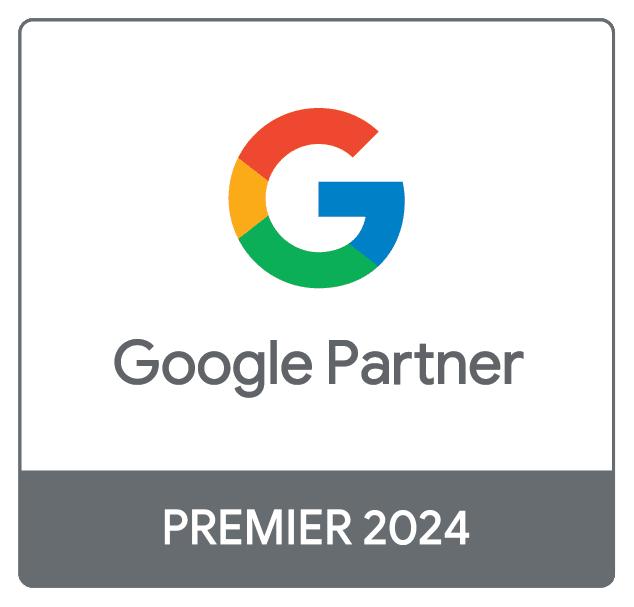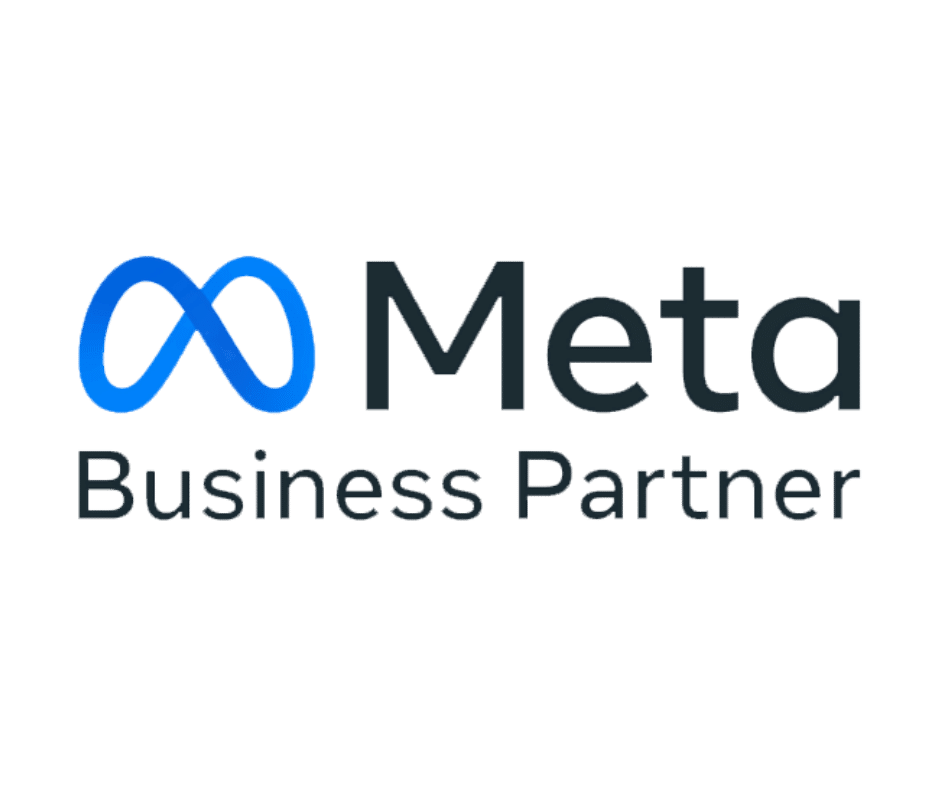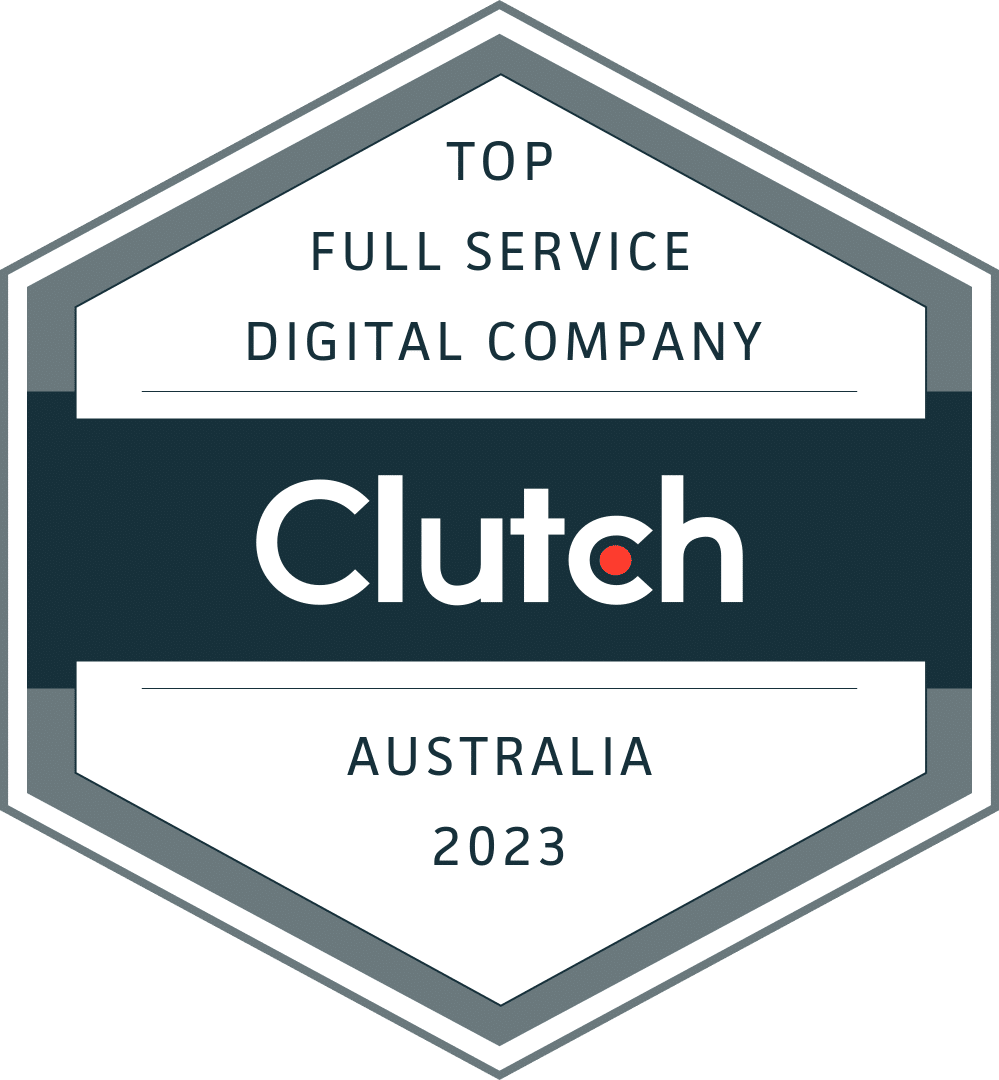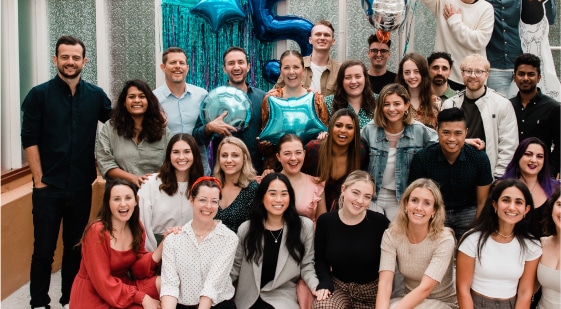How Much Does An Agency Cost? With David Lawrence
Episode Description:
How much does a digital agency cost? David Lawrence talks numbers, percentages, and pricing models. From Google Ads and SEO, to social ads and email marketing… this episode reveals the dollar figures you need to know to get the best out of your marketing agency!
Key Takeaways:
- What are the different payment models?
- How much you should expect to pay for each service:
- Google Ads
- SEO
- Social Ads
- Creative/ Design
- Email Marketing / Automation
Additional Resources:
Featuring:
About the Guest:
David Lawrence is the MD and Co-Founder of Rocket, an award-winning Australian digital marketing agency. He is also the co-author of the Amazon #1 best-selling marketing book 'Smarter Marketer'. David has presented at several events including Inbound Boston, Search Marketing Summit, Mumbrella360, CEO Institute and a variety of seminars and in-house sessions. Follow him on LinkedIn.
Transcript
James Lawrence: Welcome back to the Smarter Marketer podcast. Today I am here with David Lawrence, Co-Founder of Rocket, and also my much, much, much younger brother.
David Lawrence: Dave.
James Lawrence: How's Mom?
David Lawrence: Great. She says hi. She's good.
James Lawrence: Dad. Yeah, perfect.
James Lawrence: That’s perfect. It's good to hear. So we are today going to discuss how much you should be paying for a digital agency. We're talking before the pod that we're going to try to lift up the hood of the car. We're going to try to give as much value as possible. We're not going to say ‘it depends’. We're not going to say we won't talk about how much we charge. We're going to try to be as transparent as possible. So, Dave, the best possible place to start is just to talk bigger picture, just different ways of paying an agency, different models, how arrangements can be structured.
David Lawrence: Yeah, it's such an interesting topic. Agencies have been around forever, obviously, and I think for as long as agencies have been around, there's been different ways that they've priced themselves, and different ways that clients have wanted it to be priced in. I'm not sure anything has changed dramatically in recent years, but I think digital agencies definitely have some flexibility when it comes to pricing model. So the first thing I'll say is I'm going to say it depends a few times today. I think it's a legitimate answer to the question because the thing about marketing is it's not a commodity, and anyone listening to this podcast knows that, that you don't go out to a shop and buy yourself some marketing. Marketing should always be a custom service which is designed to solve a business problem. From my perspective, it's not just about creating beautiful things. It's not about getting seen. It's about a company saying; what do we need to achieve as a business and how can marketing help us get there? So when someone says to me; what's the cost of a digital agency or a particular campaign or a project, my first instinct is always to say; well, what's the problem that's being solved? I'm sorry if that's a bit of an ‘it depends’ kind of start.
James Lawrence: I'm going to push you harder. I'm going to get extra numbers out of you.
David Lawrence: You’ll get actual numbers in terms of ranges and that sort of stuff. But I just think that's an important thing to set the tone as, which is if you go out looking for a cookie cutter price, and if you find an agency that has a cookie cutter price - so a clear list of prices; these are for services and this is what we charge for them all, irrespective of who the client is, then you shouldn't be surprised when you get a cookie cutter solution. And you know what? For some clients, that's going to work brilliantly. If you happen to need what they happen to sell off the shelf, then that may well be the right approach for you. And you could jump online right now and find a bunch of agencies that will tell you exactly what they'll charge. But I think for most of the people listening to this pod, in-house marketers facing genuine challenges and a pretty tough market, the problem they're trying to solve, it's custom, it's unique to them.
James Lawrence: So how do you do it? If you're an in-house marketer, you're aware of what your problem is. It's only to generate this number of leads or this many online sales. You feel that Google is maybe the way to do it, or Facebook or LinkedIn. You reach out to an agency. What are the different models like? How can an agency charge you?
David Lawrence: Yeah, definitely. So let's go through some of the really common ones you see in the Australian marketplace at the moment. Probably the most common one is sort of a retainer model where you basically are going to be charged a flat fee per month for that particular channel. So the agency is likely just to go; we need $3,000 or $5000 or $7000 or $10,000 or $50,000 a month to run your Google ads campaign. And that price might be based on some internal parameters that they have in the agency, but they're going to be very much looking at your campaign and they're going to want to have a best educated guess about the sort of effort that's required to get a result. So with that kind of retainer approach for these Google ads, you're expecting the agency to want to get into your Google ads campaign itself and see what's involved, see what the scope of improvement is and what ongoing maintenance can look like.
James Lawrence: That's kind of how we at Rocket charge, pretty much all of our engagements are. We hopefully do a diagnostic before working with a client. Yet we've identified that this is the channel or the channels we should be working in. Google ads / SEO is pretty common, for instance. And we're going to charge you X for SEO and Y for Google ads. This is the scope. Work together for six months, reset the strategy, work together, monthly reports, WIPs, all that kind of stuff.
David Lawrence: Yeah, that's it. And the retainer models an interesting one. It's not without its flaws, of course, but it's sort of trying to align the risk somewhere between both parties. So the agency is looking at it and saying, we think there's this amount of work that's required to achieve the results that are being discussed and pegged out at a certain price. And equally, the client is taking a risk as well. And whether they're being overcharged or all the rest of it. But usually time will tell. And as you just suggested, typically with the retainer model, you have resets. Some agencies are quarterly, some of every six months, some yearly, but probably a reset to make sure that the scope was correct and that it's working for both parties.
James Lawrence: Then the next kind of the next model that could be out there in the marketplace?
David Lawrence: The next one is a bit of a hybrid or it can be standalone. The next one is a percentage of media. So often if you have an agency, particularly in the paid ads space, they're going to charge their retainer. And if you go over a certain amount of media, they'll charge a percentage of the media. And that's because typically the more money that's having to be spent on the ad campaigns, the more work that's being done by specialists within the agency. So pretty common to see an agency that has a flat retainer fee plus 10% of media spend over a certain amount of money. That'll depend on the size.
James Lawrence: And that percentage floats, right? Like I think that's probably the second most common way that we'll be charging our clients where it's a certain amount of money if it is a channel with media in it and to manage a certain amount of media… And I think maybe to jump in here, often clients who are more accustomed to offline media buying TV, traditional newspaper, billboards, whatever it might be, digital is different where generally agencies like us don't get a markup or a commission, so we don't get a kickback from Facebook, don't get a kickback from Google. The way we make money is through the retainer, plus the media management where I think a lot of the time it will come up with in-house marketers are saying, well, that's ridiculous. Why are you charging 15% or 10% or whatever it might be? And well, generally that commission or markup, you're paying a lot more for other media, you just don't see it because it's built into the media. And I think the other element of digital there is often we'll find clients that have come from programmatic and different platforms where there's a hidden markup or a hidden commission that the agency is getting. So then there is no media management fee or quite a small one because there's actually a much higher percentage being built in. So you're actually not buying the media. You think you're buying.
David Lawrence: 100%. And it sort of goes to the question of transparency for clients, doesn't it? Just to throw back to a story, way back in my career, I did some freelance work to an ad agency back in the in the good old days when it came to commissions as the way for agencies to earn money. And back then this was a traditional agency and they charge lots of money for services plus 17.5% of everything they did. And it literally was a license to print money for agencies. So yeah, if you're working with a digital agency nowadays, you should be expecting true transparency and accountability. You have every right to understand where they're making their money. And as you say, if the money is being spent in sort of standard, you know, Google, Facebook, LinkedIn type channels, then the money that goes to those organisations should be going there completely.
James Lawrence: That's it. I think the flip side to that is be realistic, which is, if you're spending $100K a month on media and you're expecting a digital agency to run it at 5%, that's $5000 a month and you divide that by your four weeks in the month, and you've got $1200 a week and you're paying a couple of hundred bucks for someone's time. Do you really? Do you? Is it realistic that six hours of someone's time is going to be enough to properly manage $100K? So work with your agency on what's the amount of time / resourcing that's going to allow them to make awesome decisions, be in the tools, split testing, bringing creative in, whatever it might be, and you'll actually find that $100K goes a lot, lot further. So I guess the next model. So we've kind of got flat retainer, then we've got a retainer plus a percentage of spend. The next model that an agency could be charging?
David Lawrence: Can I say one thing? And I don't want this to come across as self-serving for agencies, but something that has frustrated me a little bit in the past has been when clients grow their media spend and they start to deeply resent the media percentage. And I've seen clients say that we're now spending $150,000 a month on media. We've decided to bring it all in-house and give it to one paid search specialists that they've employed, and they see that as a saving. They'll say, well, you know, we've been paying 8% or 9% of all of our media. It's cheaper to put someone in house. And I find that quite frustrating because of the skills that are required to execute brilliantly on campaigns are really complex nowadays and involve lots of people. So I sort of encourage people when they're thinking about what they're spending on media to understand exactly how much work is going in to scaling up that media spend, not just with a paid specialist, but with strategists and creatives and writers and all the extra people that agencies, good agencies tend to bring in if they're earning their money off of media.
James Lawrence: That comes back to your point before, which is look at what problem you're trying to solve. We're trying to solve this problem and this is the bucket of money. It doesn't really matter if a larger percentage is going to the agency in a smaller percentage into Google and Facebook as long as the actual outcome itself is is better. And I think it's up to the in-house marketers themselves to be able to understand the value and to sell it to stakeholders within their company.
David Lawrence: Again, I don't want this to sound super serving self-serving… don't think about the total you're spending. Think about the results you're getting.
James Lawrence: It's just true though. The problem is often non marketers are accustomed to… we used to buy the billboard by the airport. We used to buy the full page ad in the Fin Review and there was no media fee or a very small one without actually realising that. It was all baked in.
David Lawrence: And I think in that environment, the cheaper you can get the billboard, the better. The billboard doesn't become less good because you spent less money on it. So I think for particularly non-marketers or people that have come from that traditional media background, it's all about negotiating down the price you pay for the placement. And that doesn't necessarily translate well to digital, where you're dealing with quite skilled people who are trying to achieve something.
James Lawrence: It's actually the complete opposite, which is the way to drill down the price is by having awesome people optimising the campaign so that you get better reach or better results.
David Lawrence: Yeah, 100%. But yeah, so the next model, there's a really simple model that it's probably not that popular, but you definitely come across it, which is purely an hourly rate model. You see this working sometimes at sort of, I guess the top end of town does this approach where they want some transparency on their retainer and you see it from very small companies or even small practitioners where they're purely going on hourly rate. Again, it's a model that's out there, not great for predictability of expenses sometimes for the client. But yeah, it's a model that's out there.
James Lawrence: Some government work I guess gets done that way as well. So why don't we do that as a business?
David Lawrence: We don't do it as a business just because we like to be focused on the business problem itself. We like to know that there'll be some months that we go way over in our commitment. This is why the retainer model works well for us, and our clients will go way over in the commitment some months and we might go under some months and we'll try to balance it out over the six months or twelve month life of that agreed campaign. We find the hourly rate compensation. It does a couple of things. First of all, it focuses the client on the number of hours that are being used, and it's always easy to find what can be perceived as wastage because the path to success with marketing is not always a straight kind of journey. We might need to spend more money in design or an element of coding or a particular specialist on a channel or strategy, depending on where we think the issues are. And I think the minute you do hourly rate work, you're starting to have to have that discussion with clients and they may not be the best people to make the decision on where the money should be spent. Some clients are great at it, some clients aren't. So we just find it's simpler not to go down that path.
James Lawrence: Definitely takes the focus off the problem and it becomes this recurring question of how do I keep my costs in check every month? And I think a retainer model at the very outset says this is the problem. We agree that this is the amount of money that we believe will help solve it. And let's just keep focused on the problem as opposed to nickel and diming each other every month.
David Lawrence: Yeah, that's exactly right.
James Lawrence: Next model.
David Lawrence: Next one's an interesting one. This is performance pricing. So this for many years has been the holy grail for agencies. People talk a lot at agency conferences about how we ought to be. We ought to be pricing on performance. And what this basically means is that you go to the client and you say, look, we're only going to get paid on success or we're going to be paid a certain percentage of success. So it might be for every sale that's made, the agency takes 10% off. Every lead that comes in, we get a flat amount or a percentage. It seems really clever and in many ways you would think it's awesome because it ties the agency and the client together. The agencies, in effect, got skin in the game and there are certainly some types of campaigns for some clients where it really does make sense and it's a fantastic way to sell. Equally, it's not for everyone.
James Lawrence: We've done it historically. Every single time we've done it, it hasn't worked. I think there's two things to that; one is unless you're in an e-commerce environment where you're kind of almost moving into like an affiliate type model, let's kind of put that to the side for a second. I've found that every time we've done it with a client in a lead gen kind of operation, B2B, anything that isn't transactional, you ultimately find that interests aren't aligned, where if it's based on generate me more traffic super easy for us to drive traffic. But that doesn't mean quality. If it's rankings, there's ways for us to move rankings faster than we should or to get ranking on things that aren't necessarily benefit to the business. Traffic’s cheap, easy to move. Then you go, well, just do it to the lead level. Then it's all just lead volume as opposed to lead quality. And the relationships we have with clients that are strongest are ones where we're sitting there working with them saying, let's how do we sharpen up lead quality? These territories aren't working. These are almost impossible to then tie it to a performance type space.
James Lawerence: And then even if you get the lead stuff right and we feel we're moving in the right direction, then it just becomes a sales issue, which is, well, we've led the horse to the water, but we can't force it to drink. And inevitably it's just an outsourced way of ending up with the sales and marketing misalignment conversation. So I think for us, I'm yet to be proved that in any way, shape or form, unless it's transactional. Can you actually make it work? I think some small bonuses on some things that objectively both parties are moving towards, but not necessarily the entire engagement can work. And then if you look at e-commerce, well, then you start to possibly be able to put some metrics in place where both parties can move toward. Is that what you'd kind of agree with?
David Lawrence: I think so. So really what you're saying when it comes to lead gen campaigns, it should be the cream on top if someone's going to go down that path, but not necessarily the whole thing. I think that's right. Obviously not going to name names, but some of the ways it's gone wrong for us in the past have been quite spectacular as well. You know, lengthy discussions with clients where they were genuinely, highly metric driven campaigns and everyone got on the same page. Everyone thought the deal was great, but the performance numbers in the end surprised everyone with where the money was going to go afterwards. And it was obviously just a terrible misfit. And I think even on the transactional income side of things, I don't think it's as cut and dry as as a lot of people would like everyone to think as well. I see a couple of drawbacks. Firstly, and I think Covid's shown that we don't have endless supply and capacity, and even when it comes to online retail, there's quality issues that come into play. So the agency can be doing an incredible job at driving a staggering number of leads. But if the online retailer runs out of supply or their supply chain breaks down in terms of delivery or their customer service can't handle things in terms of fulfillment and they get bad reviews, that in turn destroys the future conversion rate. Then the hard work of the agency where they've genuinely done an awesome job can mean significantly lower performance.
James Lawrence: And we're not going to talk guarantees on this podcast, but you then kind of start looking at, there's certain tactics can be undertaken in SEO that aren't necessarily in the best long term interests of the client. So you end up looking at an agency potentially incentivised to take short term tactics that aren't in the best interest of the of the retailer over time. So because we've been around for a long time now and don't necessarily like the model that is heavily incentivised, I think a small bonus based on certain things happening can be a nice way to move people in a general direction and get people moving in the right direction. But otherwise, probably doesn’t work so well.
James Lawrence: What I'm keen to move to now is to actually put some meat on the bone. Look at core channels, look at Google ads. I think that's a platform that lots of listeners are engaged in. Look at SEO, look at the different social platforms, and then talk a little bit more about creative design, email marketing, and what are some actual numbers or percentages that can actually give listeners some benefit to go; yeah, that's about right. That's what I'm saying. We need to take this conversation back to the board, to my manager, to the CEO to say we're actually not spending enough or conversely, interesting. Maybe we are spending too much on that service. So starting with Google ads, obviously small businesses might be spending a couple of hundred bucks a month on actual media through to Google, through to businesses spending hundreds of thousands of dollars. And, you know, a good number of Australian retailers and brand spending into the seven figures each month. But how much should it cost to have an agency run your Google ads in good way?
David Lawrence: You want us to throw it all out there?
James Lawrence: Throw it out there, Dave. Come on. So let's say, okay, you're spending $10,000 a month on Google ads. How much should you be paying an agency to manage it for you?
David Lawrence: I'm not allowed to say it depends. So it does depend on, like I said, in the beginning, but if we were looking at a pretty simple campaign to spend a month on Google ads, then I think a reasonable starting point… for our pricing, how we approach things, you're going to be looking at starting probably around the $3,500 dollars mark. If it's a really complex campaign, then you might be going up a little bit more than that.
James Lawrence: What about if I'm spending whatever, I'm spending $5000 a month?
David Lawrence: You're spending $5000 a month on the media? Yeah. It's typically not going to make a lot of difference. There's a minimum amount that any agency is not going to go below. And even if you're only spending a dollar a month, there's a fair bit of work. And simply understanding the campaign, ensuring that it's been streamlined properly and is being a dollar product.
James Lawrence: That was a test and you passed it. I think often that's a misconception, which is, but hang on, I'm only spending $5000 or I'm only spending $3000. Surely you can't charge me to $3000-$4000 to manage it. And it's like, well, unfortunately, if you want someone who's unsure, not necessarily that everyone who's good is on, but if you want someone who's unsure, you want an account manager that you pick up the phone to or send an email to, and they respond and they actually know your business and you expect someone to be in there every week in the platform making changes, and you look at hourly rates of any professional service provider in any industry, not even digital in major cities in Australia these days, you are looking at a couple of hundred bucks being a pretty reasonable benchmark and it's going to it's going to add up and it is going to be $3000-$5000 if we're moving through to $50K of media.
David Lawrence: Yeah. So again, it depends on complexity and how hard it is going to be to spend that money with good fit prospects. Once you're at around that kind of spend, you're definitely going to be adding some kind of a media management component on. So typically you might charge 9%-12%, sort of depends on the agency that'll go on top of that original base retainer and that's quite flexible. So if the spending goes up in a particular month, it obviously scales up with the percentage. And if it drops below the threshold and you're probably the best person to talk to whatever threshold…
James Lawrence: I think it jumps around a little bit. And when you're saying complexity, multi-region, looking at getting better integration into sales environments and lead quality scoring, those types of things, I'll often impact complexity a new campaign or a complete campaign rebuild versus, you know, we'll have clients that are have been running Google ads for ten years and we've been running them for four years and products and services aren't changing too much. And you are obviously still market driven and you're still at the mercy of changes Google are making. But often those campaigns are simpler. I think for us, it's difficult for us to to work with a client where you don't have $3-$4K a month minimum for Google ads. That probably gets you to maybe $10K, maybe $15 of spend, maybe less, maybe more. But once you start getting past $30K, $50K, $100K, it's a media scale. You're looking at, as you said, 15%, some agencies, 12% others down to 9%. Don't see too much low single digit media management in Google unless you're kind of spending hundreds and hundreds of thousands of dollars and whatever else. I think that's good. You've given us some some real numbers there, Dave.
David Lawrence: One of the one of the nice things about where the agency or the digital services industry is at the moment is that there are options for almost every price point and every level of complexity. But what you kind of give up is confidence. So there'll be people that have heard that price and go, wow, that's insanely cheap and there'll be other people that hear that price and go, that is outrageous. How can they justify it? And I think it's important that listeners understand that what you're doing is you're buying confidence and you're buying expertise. So if you go to an agency like Rocket and there's a whole bunch of other great agencies in Australia as well, you know, you're going to be handled well, you're going to have a genuine depth or breadth of experience and you're not just dealing with one person, you're going to pay for that cost money. You can be really lucky if you're a startup small media budget, you go out and find someone who's working on their own and they're fantastic at what they do. You can get a great experience for the fraction of the price. But what has to be factored in there is the risk that you are dealing with one person. They may not be what you think they are or they may get sick or they may take a job or whatever.
James Lawrence: They might not be very good
David Lawrence: Or they might be very good. Exactly right. So as you start paying more, some of it is for the ability for that agency to do better and more complex work. And some of it is simply insurance. So you end up knowing you're going to get work done at a certain standard and not below that.
James Lawrence: SEO. One number.
David Lawrence: All right. I'm going to say again, you're probably looking at a campaign that is pretty similar around the $3000-$3500 dollar a month. What I was going to say, though, was that they are a bit different to paid search in that SEO has an enormous number of different areas. And so if we have a client that comes to us and they say, look, we've got great web devs and they're doing all the coding changes in our website and we already write great content, then that will limit the scope of the work we're doing for SEO. So we're effectively going to be a technical SEO agency for the client. We might be doing some lead generation work for them as well, and just a bunch of general strategy, making sure things are right, doing the reporting, but as with all things, the more services that get bolted on, the more the price goes up. And SEO is definitely an area where the price can go up quite a lot depending on what's required.
James Lawrence: That's exactly right. I think if you're a small to medium sized business that just needs to have good technical on site SEO done and a little bit of link building, then there probably are agencies out there doing decent work at $3-$5K. But if your first thing is strategy, there's businesses that probably don't actually need content being worked on all the time because they've already got that solved somewhere else. But if you need a big content play, then how much does content cost? How long $3K-$10K a month in-house or with an agency if you're in a competitive space and haven't been doing link building before or off site work over the last five years, and you're against banks or airlines or complex eCom, you've got catch up and you need a strategy which you could have multiple full time employees working on that kind of stuff, or you could be using an agency for it. But it seems to me that most well established upper end of SME into mid-market, you are probably spending with an agency $5K through to $10K for your kind of just technical program. Lots spending more than that. And if you're below that mark and you're spending a couple of grand a month on an SEO tick, we're doing the tick box of a couple of grand, ten hours a month, 2.5 hours a week, is that really a marketing channel that you're taking very seriously?
David Lawrence: You certainly wouldn't expect it to move the needle. And I think, again, the only exception is if the other elements are being taken care of internally or by another provider. And we certainly see that. We certainly take on campaigns where there's a whole bunch of stuff that's happening well on their website and with their content. And we're just coming in for a particular purpose. SEO, as you say, it's so complex and there's plenty of in-house teams that have large numbers of people just to run it.
James Lawrence: Yeah, there's businesses spending a couple of hundred grand a month on SEO. Right? And then the reality is that I think that's something that needs to be addressed and realigned. Its so common for us to have a client come along and say, I want to spend 50 grand a month on Google ads or I have been spending 50 grand a month on Google ads, but then we'll balk at the idea of spending ten grand a month on an SEO program. And then you look into analytics and half their traffic is coming from SEO and 20% is coming from Google ads. And it's not all branded traffic coming through through organic. And I think because it's this kind of misconception that the industry has done itself such a disservice over the last 15 years of cheap, cheap, cheap packages, it's actually devalued the channel and lift, you know, lift above it all. And what problem am I trying to solve here? Or what value can be generated from a really strong organic program? And often you find that you should be spending comparable to what your media spend is.
David Lawrence: Yeah, it's interesting, isn't it? As we talked about before, the whole cookie cutter approach, I don't think there should be cookie cutter approaches for any of these channels, but if there was one channel where they should never be a cookie cutter approach, it’s SEO/
James Lawrence: And ironically it's the most package driven channel of all digital right?
David Lawrence: Which is why it has such a horrible reputation out there. And I know this is about pricing, but it's worth touching on that. SEO has had a pretty bad reputation because it's been, I think a channel that takes a long time to get results and therefore it's easy for less credible companies to come in and take retainer income without really producing a lot. And before the client knows what's going on, they've had a tidy run out of it. So I'd say if you're looking at getting a service and the company you’re chatting to is not going to a lot of effort to understand what your problem is and what you're trying to achieve, then you should run away pretty quickly.
James Lawrence: Yeah, that's it. And sadly, it's the channel that drives the most traffic.
David Lawrence: Yeah, absolutely.
James Lawrence: The next one being social ads. So let's just talk to Facebook and Instagram, I guess on one and then we'll talk to LinkedIn on the other. But I think fundamentally, pretty similar in terms of how and why they should be priced in a certain way. But yeah, let's pretend I'm spending 15 grand a month on running social advertising. Actually, let's not worry about Facebook and Insta versus LinkedIn. Like what should I be spending with an agency?
David Lawrence: The first thing we would do is take a bit of a step back and and say how good is your creative because I think when we're looking at SEO, there's an assumption there's going to be ongoing content creator and ongoing website changes done. Paid search? It's pretty simple. With creative you need a good landing page, obviously decent ads, but often landing pages exist and you're really doing a lot of work in the channel page. Social is an empty vessel unless you have fantastic creative. It's as simple as that. So if a client comes to us and says, yueah, I want to run some paid Facebook campaigns and we have a look at their website and it's not so great and we have a look at their creative assets and they're not so great, then they have a potentially very expensive problem to solve because they need great content if they're going to have any kind of impact when it comes to the paid social space.
James Lawrence: And I think it's an interesting one where, we talked briefly when we're talking Google ads that it’s the opposite of the old billboard at the airport, which is you actually almost want to pay your service provider more because they're going to get you more value in terms of optimisation and tweaks, whatever else paid social takes that to the next level, which is what we've had so many clients over the years who kind of say, That's ridiculous, I want my 30K of media to go into Facebook, not into creative. But it's no exaggeration that your 30K can get 1K versus value of 100K versus value on nothing else than the creative that is used. So it's definitely one where it's not about the media buy, it's about what you're putting into market.
David Lawrence: Yeah, that's it. And this is one of these good areas where I find that should be an easy discussion to have with people, higher up people making decisions on budget. If you're an in-house marketer, everyone uses Facebook or Instagram or LinkedIn or something. Everyone has their poison. Go into that channel next time and have a look at what gets your attention. Make the case to say unless we have great creative, let's just not waste our time.
James Lawrence: So stripping creative out, it's interesting. Like we have a creative team at Rocket and they are doing creative for, I don't know, maybe 60-65% of the campaigns that we're running in social, then for some of our clients, they'll have creative agencies in place or we'll be working with them. And we're placing the media and driving performance. And the creative agency is responsible for creative. And then for certain clients, they're doing creative in-house. So let's take creative out of it for a second. Just the actual typical media management spending 20K a month on on my paid social, what should I be paying an agency to manage it?
David Lawrence: It’s not too different to paid search once you take out the creative so you're probably looking at a starting point of about $3,000 a month and it's what you would expect. It's setting the campaigns up so the creative exists, but getting it into the into the appropriate platform. It's making sure it's working nicely and optimised. It's reviewing it, it's making small tweaks as you kind of learn things about how the campaign is going and setting up testing and those sorts of things. So again, the effort that the agency goes to in those retainer hours should have a significant impact on performance. And we sort of say with paid social that its an interesting channel. If you just set and forget, you'll get diminishing returns surprisingly quickly. Creative does fatigue and campaigns do fatigue. So yeah, it's a matter of getting in there.
James Lawrence: I think every 3, 4 or 5 months, probably 5 being too long. But yeah, 2 or 3, 4 months. That is why it does become a more expensive channel to run because then you're having to drop fresh creative in. I think the point there also that spending 100K a month in LinkedIn or in Facebook, you are then looking at your 12%, 10%, 8% on top of creative, generally speaking, and then paid creative. Paid social does get pretty complex when you are then running Instagram, Facebook potentially running LinkedIn if you're in a B2B environment. And once again, all those complexities around multinational, you know, putting buckets of leads. Tier one. Tier two. Tier three, integrating into Salesforce, HubSpot type stuff. So your price will jump around depending on what your agency is being expected to do.
David Lawrence: Yeah, absolutely. And again, you know, it's probably not as complex as SEO to quote creative aside, but you still want your agency or an agency you're thinking about working with… you still want them to go to a fair bit of effort before they give you a prize to make sure they genuinely understand the ecosystem as well. Like where does it fit into your company and will they be dealing with and what are approvals going to be like and, and how or where are we sending traffic?. So it's a complex picture and you want a proper proposal.
James Lawrence: That's it. The idea of, you know, one post a week, two posts a week, three posts a week, four… different pricing on a package is really unlikely to solve your actual business problem. Right?
David Lawrence: Yeah. So that's it. It takes a box if you've got a boss that's KPI driven and they want to see, you know, one ad being run every three months, then yeah, go the cookie cutter approach. But if you're trying to solve the actual business problem and get leads or sales below a certain price, then you've got to be pretty strategic.
James Lawrence: And the next two points are broader than the other three. Or I think it is easy to throw some numbers around but creative and design without getting into the different models and retainer versus project, etcetera. But roughly what you're seeing out there and then email marketing and automation, how that's kind of working for businesses.
David Lawrence: Yeah, definitely. So if we're talking about pure creative, there's a couple of ways that it can happen. Some agencies are going to package that up in the retainer. So as an example, quite often in our paid social campaigns will include a certain amount of creative or tweaks to creative or even editing of existing creative to make it work for that platform. So you can often expect to see that in the retainer. But typically when you've got brand new creative being worked on, particularly when it's complex or involves new ideas, then agencies will often just give you a quote for the specific piece of creative, and it can be anything, you know. So let's say we're talking about a landing page for a particular campaign. You can see agencies are building a nice landing page for a couple of grand right through to easily seen agencies charging sort of $10,000-$20,000. And again, it depends on the work that's being put into it.
James Lawrence: I think you've got your models, you've got an agency on retainer, are you paying them for a scope of work? And I think generally it is. Hallmarks, again, wanting an agency to sit down. What problem are we trying to solve here? And we believe we can solve it with this. And this is the price. I think the only area where you might be okay to take a rack rate is on things like a set of remarketing ads or a set of social ads or a landing page. Once you're working with an agency that does understand your problem and then it does become a bit easier.
David Lawrence: That's the key there, is that I think if you do have a right price for some of those assets, that's fine if the creative exists, but if the team's going to go off and come up with a creative concept, get it approved by the decision makers, potentially get photography done or video done or animation work done, let alone the in-house design work, then that price can be highly variable and should be. But once that core concept has been signed off, repurposing it for different things absolutely is getting closer to a commodity activity.
James Lawrence: Email marketing and automation.
David Lawrence: Okay.
James Lawrence: Most don't want you to give a number here because I think the solution is. Not a number.
David Lawrence: Yeah, that's it. I don't have a particular number for this, so I'm not sure if you've got one you can throw at us.
James Lawrence: Yeah, there isn't one. And that's the reality. I think that's the, the bit that businesses are, they kind of they're almost trying to ram automation into the same model of retainer work. And it's just not how automation platforms work, where it is so contingent on what your business is doing, how your sales and marketing environments are operating, email cadence reporting, all those types of things. I think it is actually a totally different kettle of fish.
David Lawrence: I think that's really fair and I don't think we've touched on this too much, but when we're looking at a prospect and trying to figure out what sort of a client they’re going to be, one of the one of the things that we assess closely is how many existing campaigns do they have in the area that we're looking at working at them in? How mature are those campaigns? How successful are they? And if we're seeing positives everywhere, then we suddenly feel a lot more comfortable about what the future's going to look like. So I'm not saying the work's easier, but I'm saying we know how they've gone with a certain amount of effort and we know how much better they can go and we put more effort in, and we can price it more accurately and more cost effectively. But when you look at things like automation and emails, when someone has no track record there at all, it can be a huge amount of work to get them going the first time.
James Lawrence: I actually feel if you've scoped it well, then a project's great because you can give certainty to both sides. But I do feel that often, particularly in the infancy, hourly rate model actually doesn't work too badly in this space.
David Lawrence: Sure. Yeah.
James Lawrence: It gives actually a clearer idea and it's almost more just how far are we going here? And you know, rather than time time based. That's been awesome. I'm glad I pushed you. I think we've got some real numbers there for the listeners. One bit of advice, I always like to finish the pod with one question. So what's the leading piece of advice that you would give to in-house marketers when they're going out to market and looking at price and price for the services that they need?
David Lawrence: Yeah, it'll be careful what you incentivise. So if you decide to go down that performance model, then just be aware that you're probably only incentivising short term activities and short term actions, whereas we know through experience that often is the long term brand building activities that are absolutely essential to future success and 6 to 12 months time and, and likewise with the media management. If you go down that path, you're incentivising potentially an agency just to spend more money on media. So the incentive should always be the one that helps the agency solve your key business problem. That's ultimately the only thing that matters. So incentivising that way.
James Lawrence: Love it. Awesome. Dave, you've done very well on your first go of the Smarter Marketer podcast. We may even get you back.
David Lawrence: Oh, I'm overwhelmed. Fantastic. Thank you, James.
We wrote the best-selling marketing book, Smarter Marketer
Written by Rocket’s co-founders, David Lawrence and James Lawrence, Smarter Marketer claimed #1 Amazon best-seller status within 3 hours of launch!
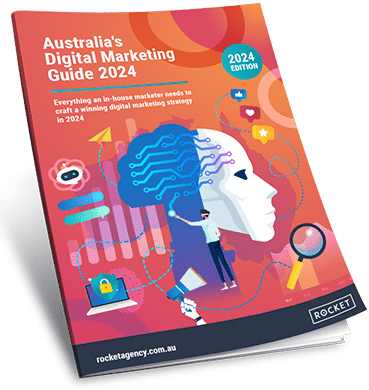
The Australian
Digital Marketing Guide 2024
Everything an in-house marketer needs to craft a winning digital marketing strategy in 2024.






